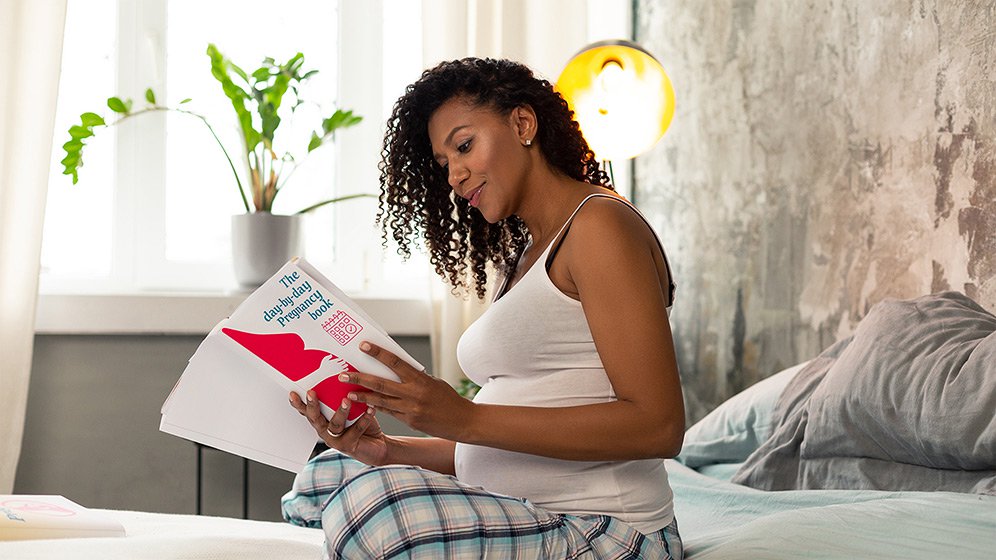Getting Pregnant At 35 or 40: It’s More Common Than Ever

Yes, you can get pregnant after 35 or even 40. In fact, more and more people do. According to the most recent fertility rate analysis by the National Center for Health Statistics, the average age for a woman to have a baby in the United States is now 30, with more people than ever giving birth after 35 and 40.
You’re not alone if you’re trying to get pregnant at 35 or later. The fertility rate grew over 67% in the last decade for women ages 35-39 in the United States. And almost 13% of people giving birth in the last 10 years were over 40.
Why people are waiting to get pregnant after 35
In general, women are waiting until later in life to get pregnant so they can be more financially secure, according to several surveys. In addition, the average age to get married for the first time rose to 30.4 for men and 28.6 for women in 2021, based on US Census data. Financial pressure, student loan debt, and spending your 20s focused on career or travel also contribute to a more advanced average maternal age.
Plus, there is less pressure to have children young to help with family farms and businesses. Rather than needing children for labor, parents are now more concerned with their ability to provide for them and to be the kind of parents they want to be. Some studies show that older mothers are better mothers who raise children with fewer social and emotional difficulties.
This shift to older motherhood applies across the board to college-educated, working-class, and immigrant women of all races and ethnicities. While birth rates dropped by nearly half for women under 25, they rose the most – 132% for women over 40. Being a first-time mother at 35 or after is no longer an exception.
What is a “geriatric pregnancy”?
You may have heard the term “geriatric pregnancy” or “advanced maternal age.” These refer to a pregnancy where the woman is age 35 or higher. Although it’s a bit of a misnomer to consider a 35-year-old “geriatric” or “advanced age”, these terms remain in the medical community as a threshold for when additional risks or complications in pregnancy can be statistically more common.
Because of increased risks of high blood pressure, diabetes, placental problems, and premature labor for pregnancies over age 35, your doctor may suggest additional tests or monitor your pregnancy more closely. Women of “advanced maternal age” also are more likely than younger women to deliver via a C-section.
If you’re over age 35 and pregnant, don’t focus on your pregnancy being “geriatric” or your age being “advanced.” Focus on being as healthy as possible, following your doctor’s advice, and preparing for the day when your baby arrives.
What are my chances of getting pregnant at 35 or after?
It’s very possible to get pregnant after 35, but it may take a bit longer than if you were in your 20s. About 90% of couples under 35 trying to conceive get pregnant after one year of regular, unprotected sex. The natural cumulative conception rate for women in the 35-39 age group is around 60% for that same time period, rising to about 85% after two years of trying of trying to conceive.
The other good news is that there are more fertility treatments available to help you increase your chances of getting pregnant at any age, but especially after 35. Plus, more insurance companies are covering the cost of fertility assistance than ever before, so help is available to get pregnant sooner.
How can I get pregnant naturally after 35 or 40?
Although it typically takes longer to get pregnant naturally in your late 30s and 40s, you can improve your chances of getting pregnant by:
- Knowing when you ovulate. There are only a few days during your menstrual cycle that you can get pregnant. Try using an app to track your cycle or an ovulation calendar to monitor the LH hormone surge that triggers the release of an egg.
- Monitoring your most fertile days. Knowing your most fertile days and having vaginal sex in that window can improve your chances. You can also learn how to identify your fertile cervical mucus to take cues from your body.
- Taking prenatal vitamins with 400 mg of folic acid (it may be labeled as folate). Building up folic acid in the body helps to reduce the risk of brain and spinal cord defects in the fetus.
- Limiting how much alcohol, caffeine, smoking and recreational drugs either partner uses. Read our other tips for making the most of your natural fertility.
- Getting your BMI between 20 and 30. According to studies by the NIH, pregnancy is less likely when the woman's body mass index (BMI) is greater than 30 or less than 20. Modifying your diet and exercise to gain or lose weight can help increase your chances.
- Using a sperm-friendly lubricant. Lube tends to make sex more pleasurable – and you’ll be having a lot of it when you’re trying to conceive. Use a lubricant like Pre-Seed™ Fertility Lubricant, which is designed to be isotonic and pH balanced similar to the vaginal environment and to aid in supporting sperm survival.



